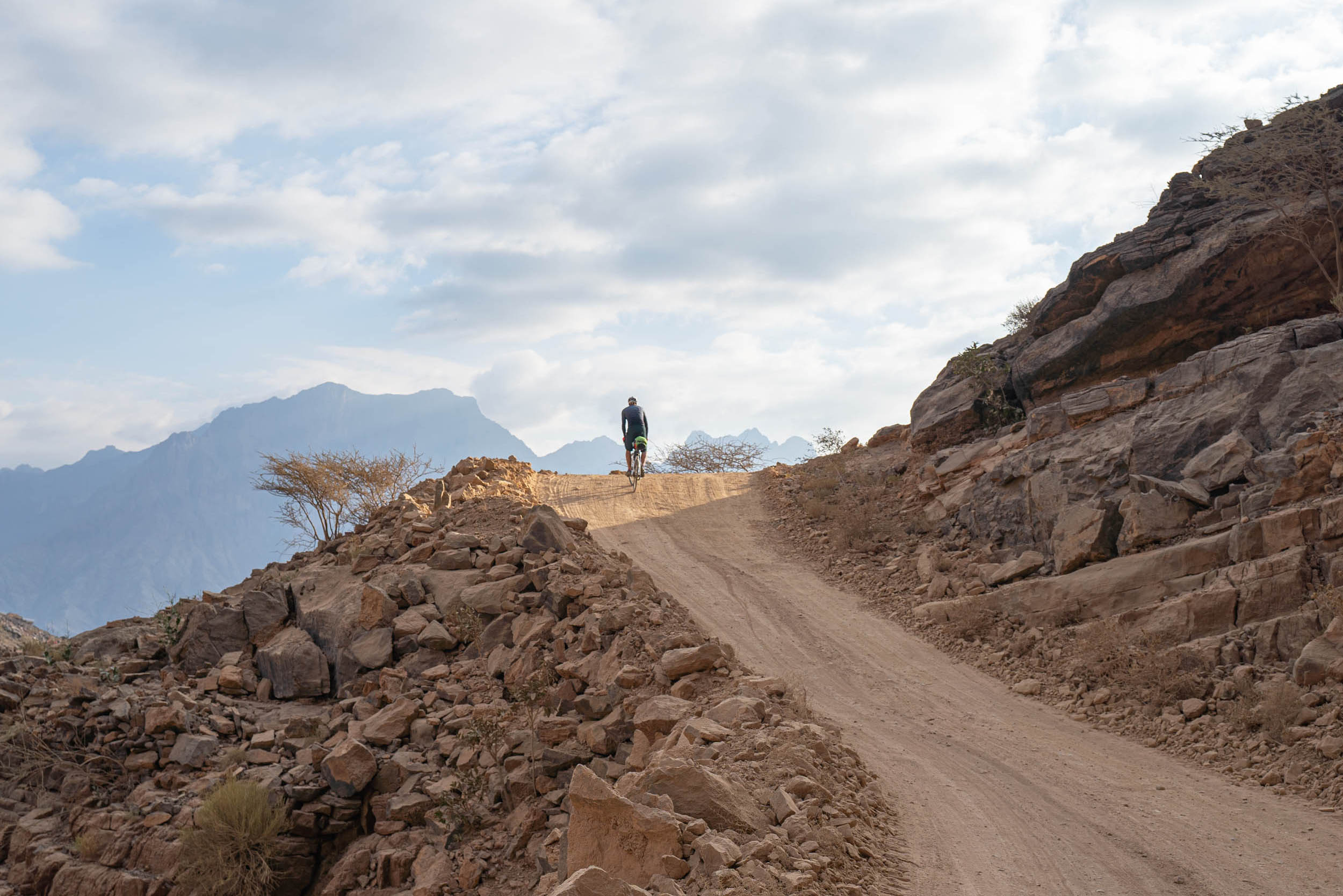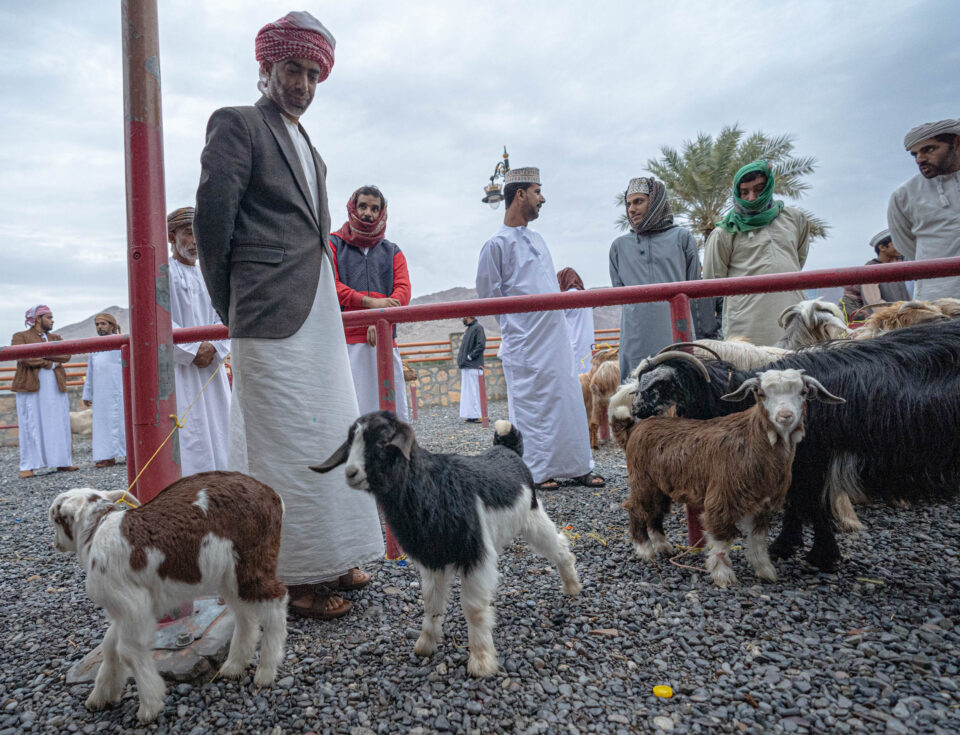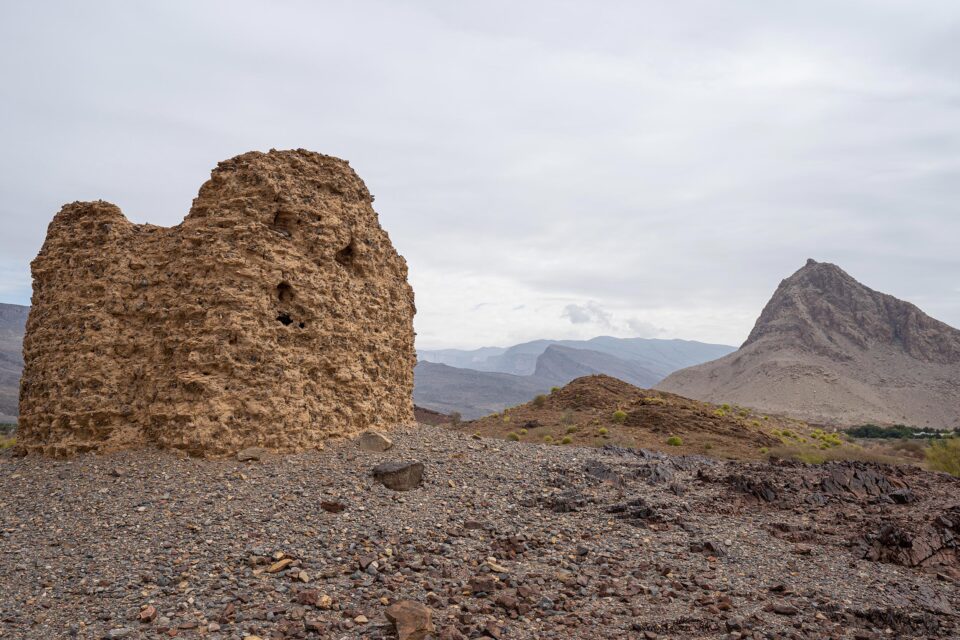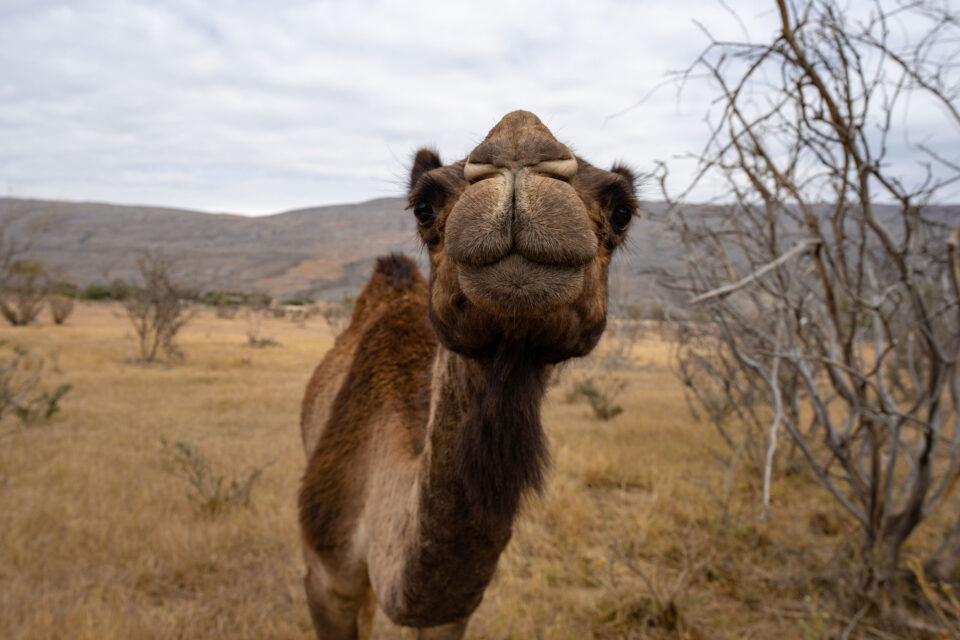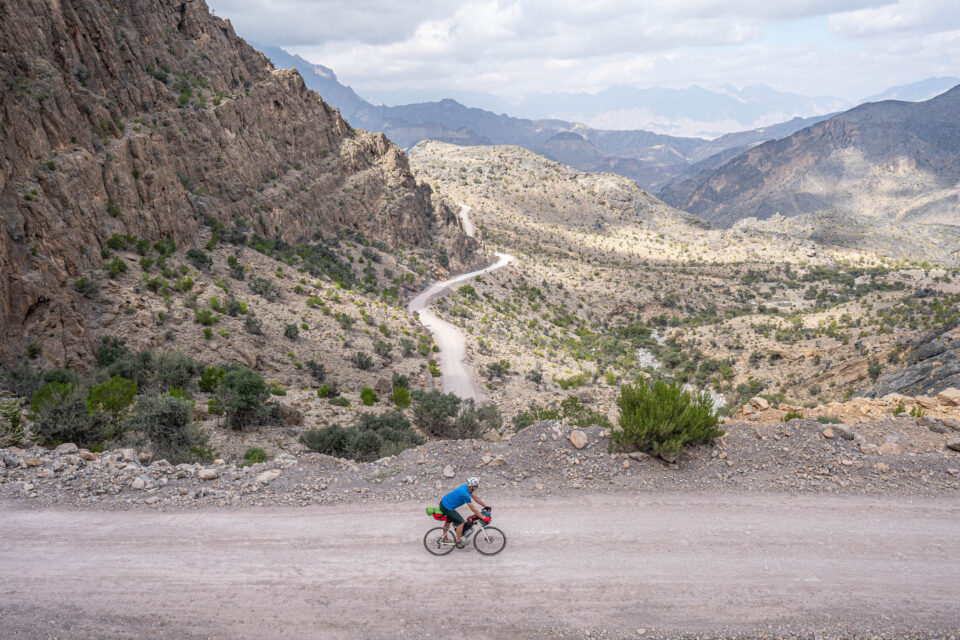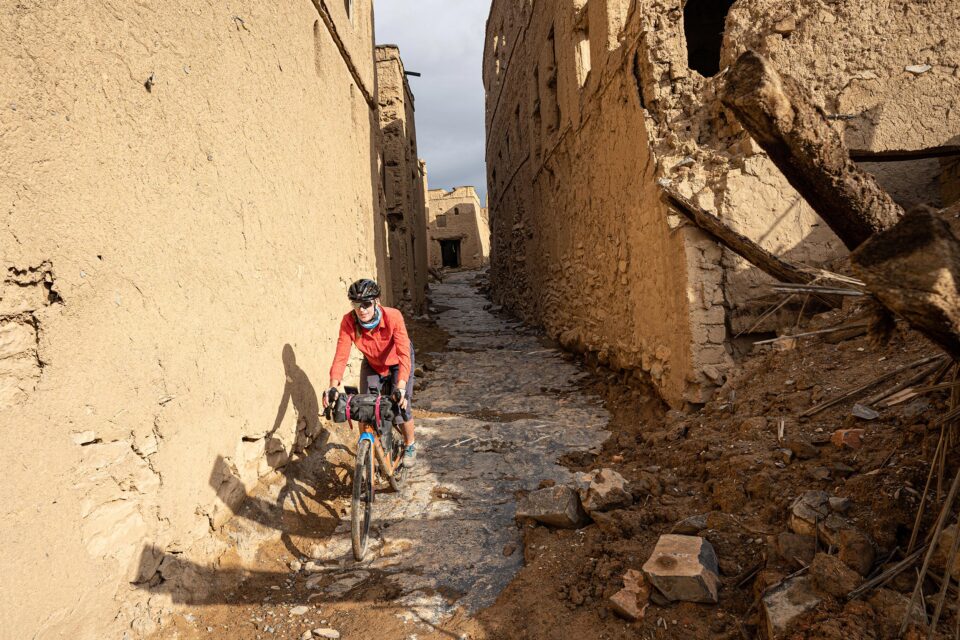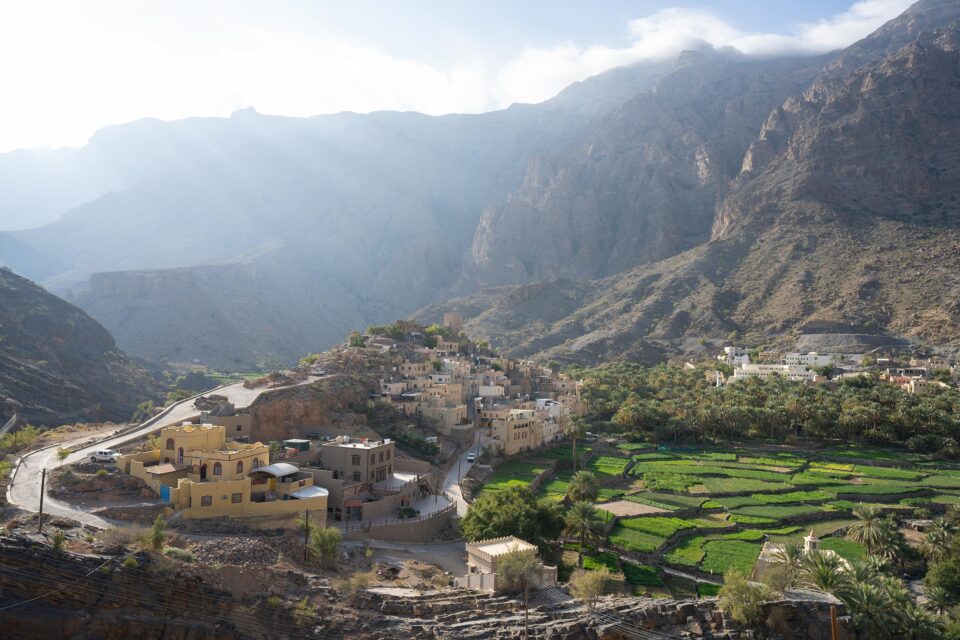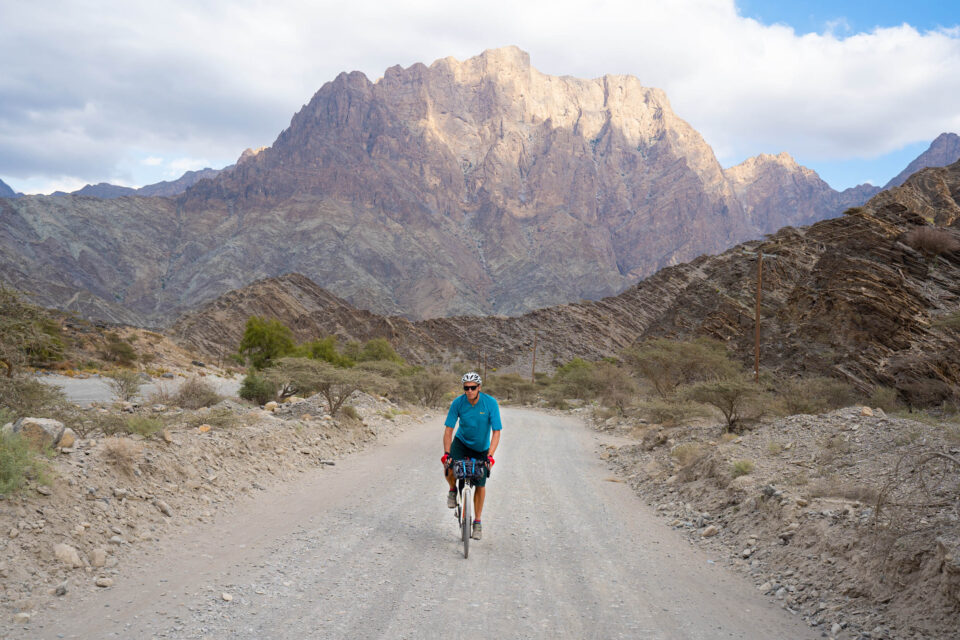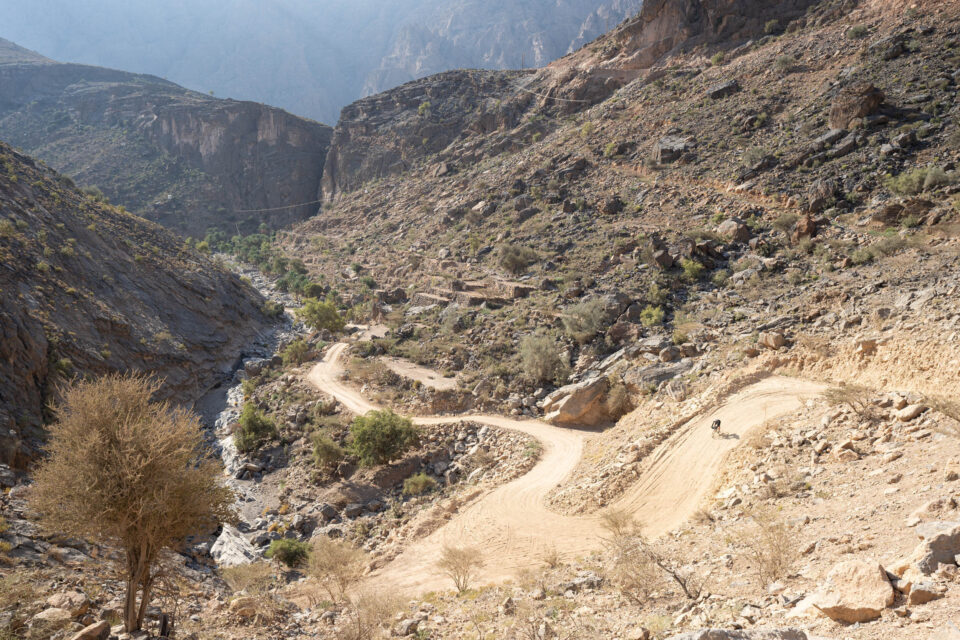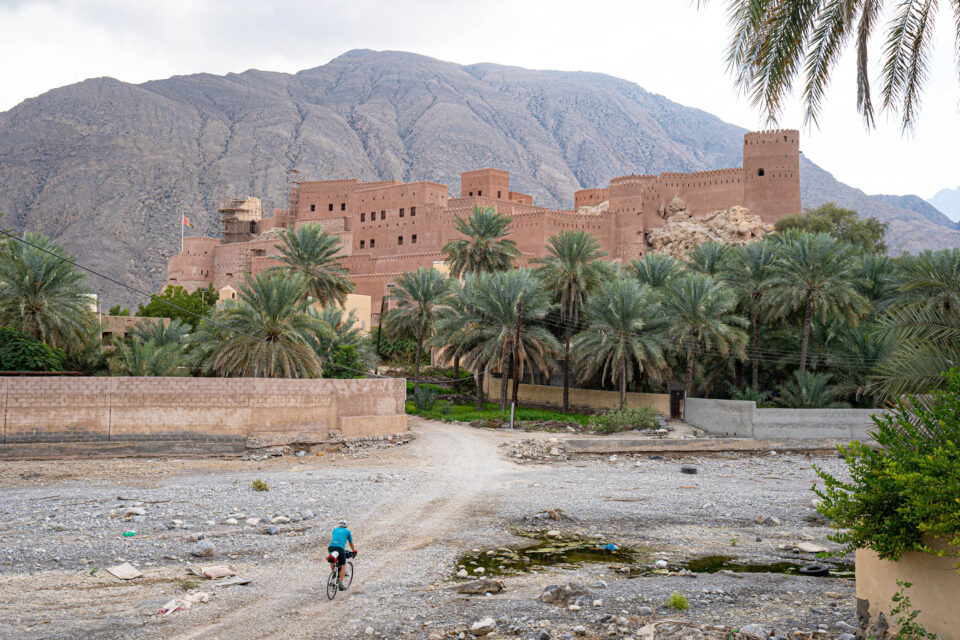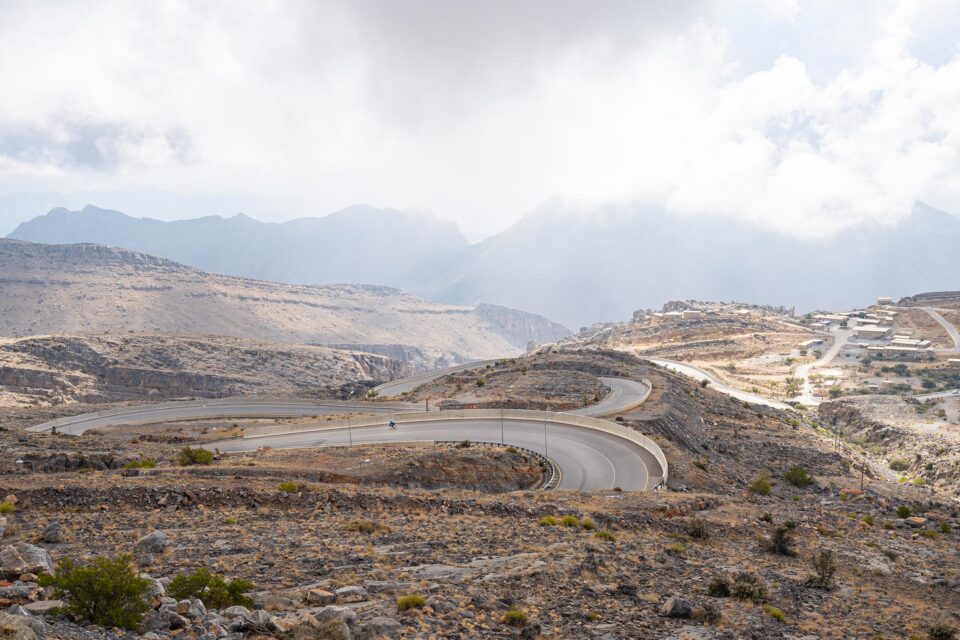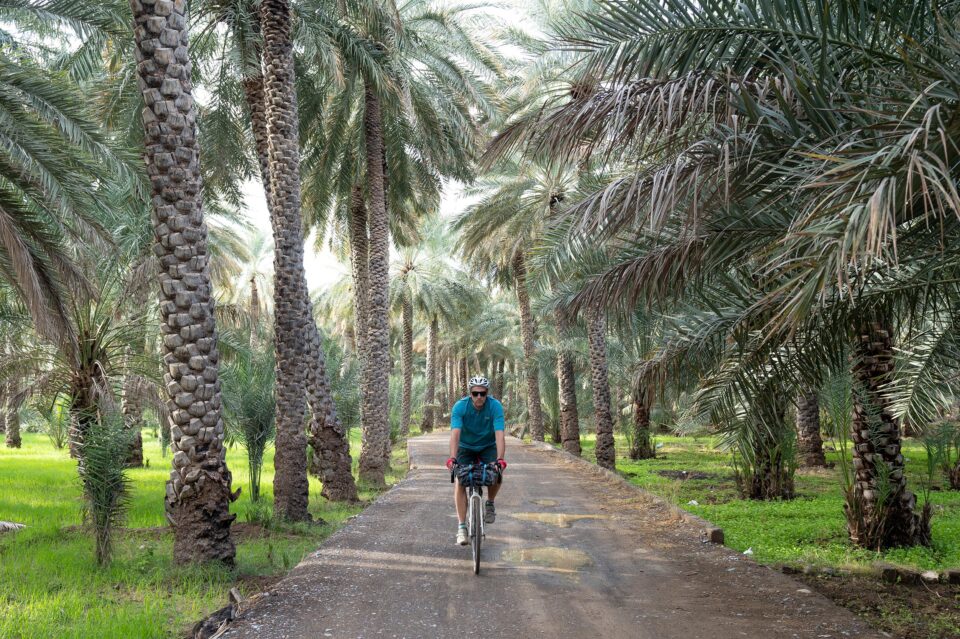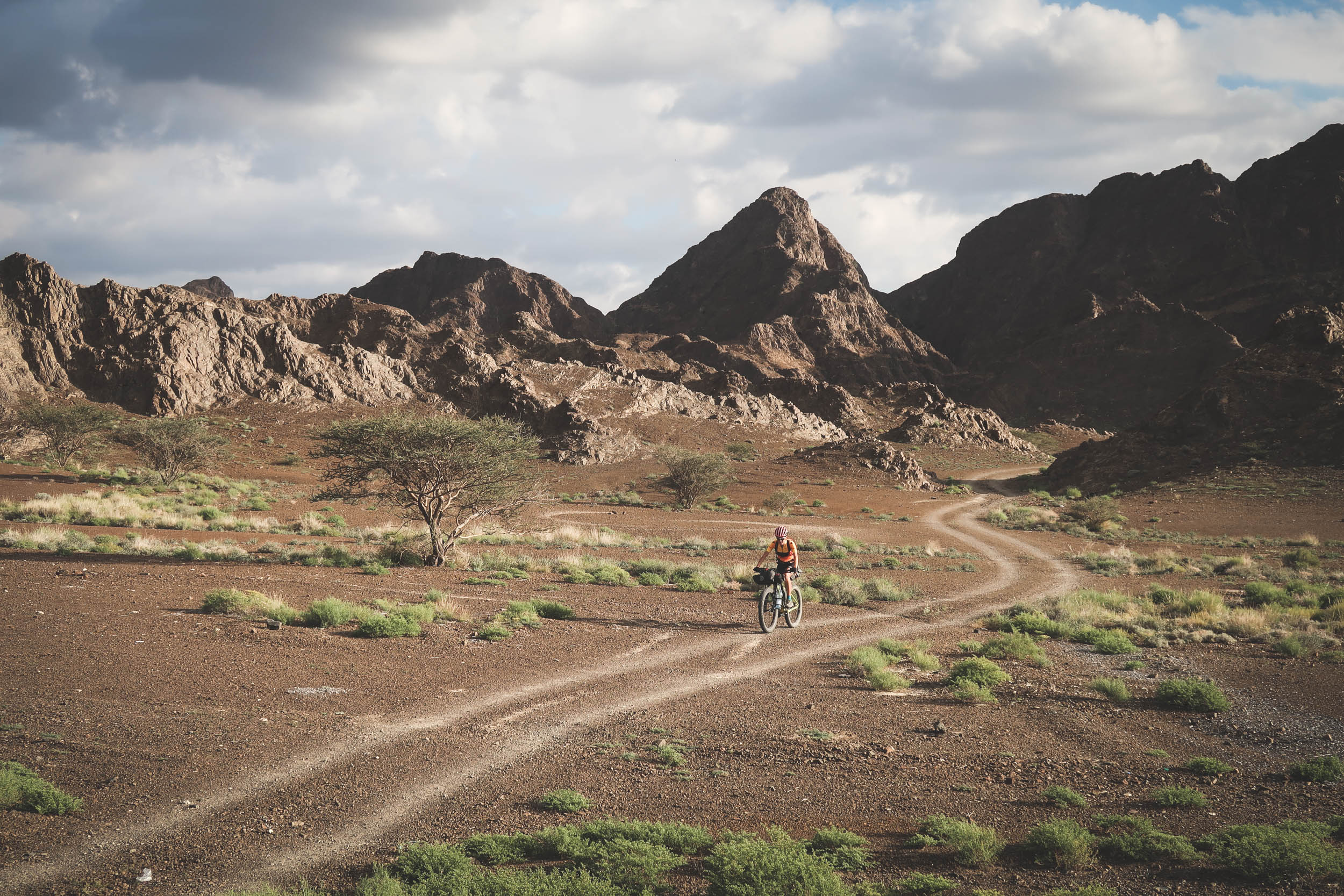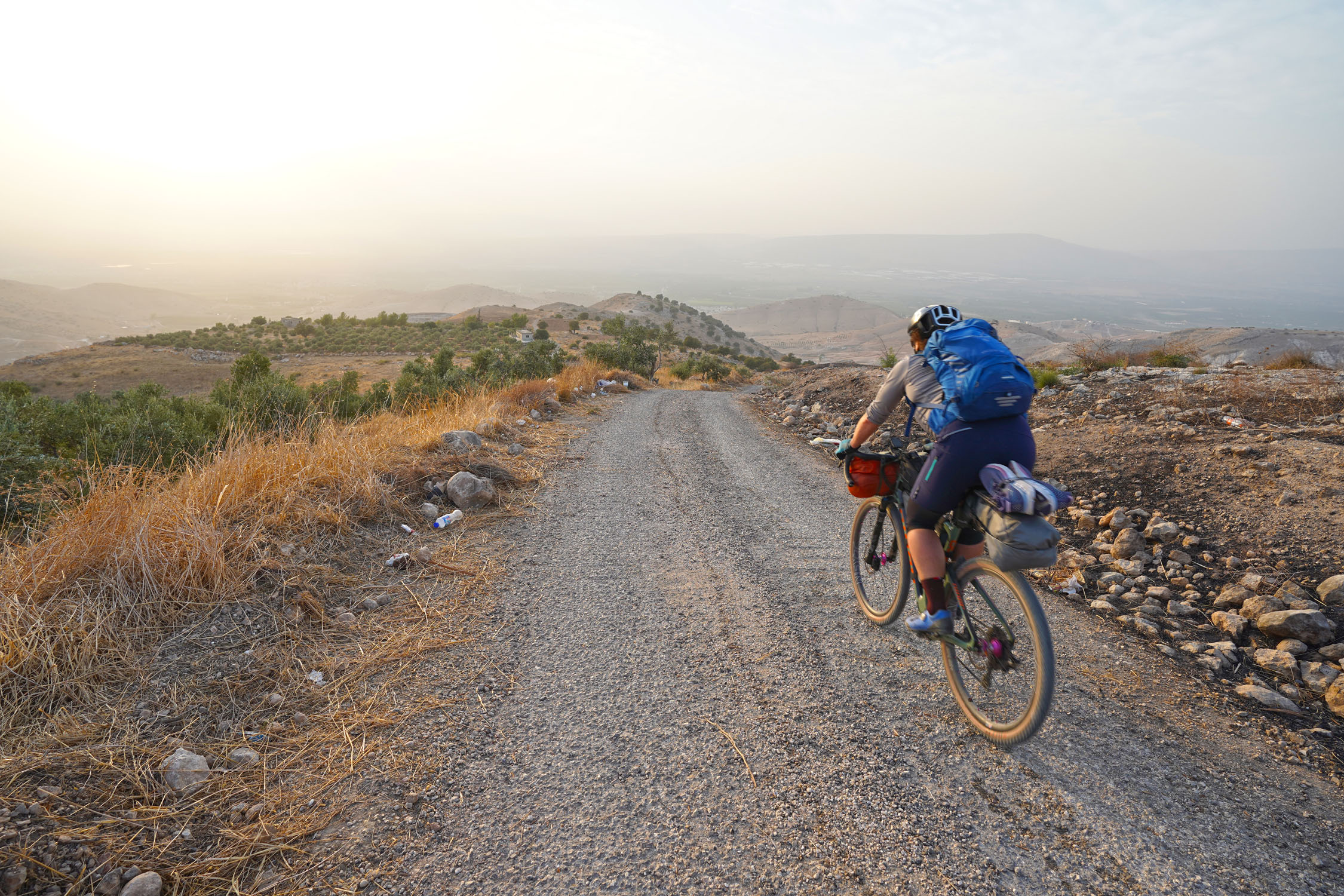Oh-Man! Exploring The Best Of The Western Hajar
Share This
This winter, Amy Jurries and her riding partner Andrew set out on a 675-kilometer bikepacking trip through the Western Hajar mountains in the Sultanate of Oman. Following the trip, Amy put together this excellent report alongside a stunning gallery of photos and logistical details on the route.
Words and photos by Amy Jurries (@thegearcaster)
So much of Oman defies Middle Eastern stereotypes. A large percentage of the country is made up of desert—including the Empty Quarter, part of the largest sand desert in the world—but you’ll also find a beautiful mix of rugged mountains, pristine beaches, dramatic wadis, historic mudbrick villages, and idyllic green oases of date plantations fueled by a thousands-year-old-network of aflaj.

Thanks to the recent transformational efforts of their leader, Sultan Qaboos bin Said al Said, Oman is a modern country, yet selectively so. You won’t find the showy skyscrapers of its fellow Persian Gulf oil exporters here, and despite the power struggles in the region, Oman remains a stable, tolerant, welcoming, peaceful, fiercely independent, and stunningly beautiful country.
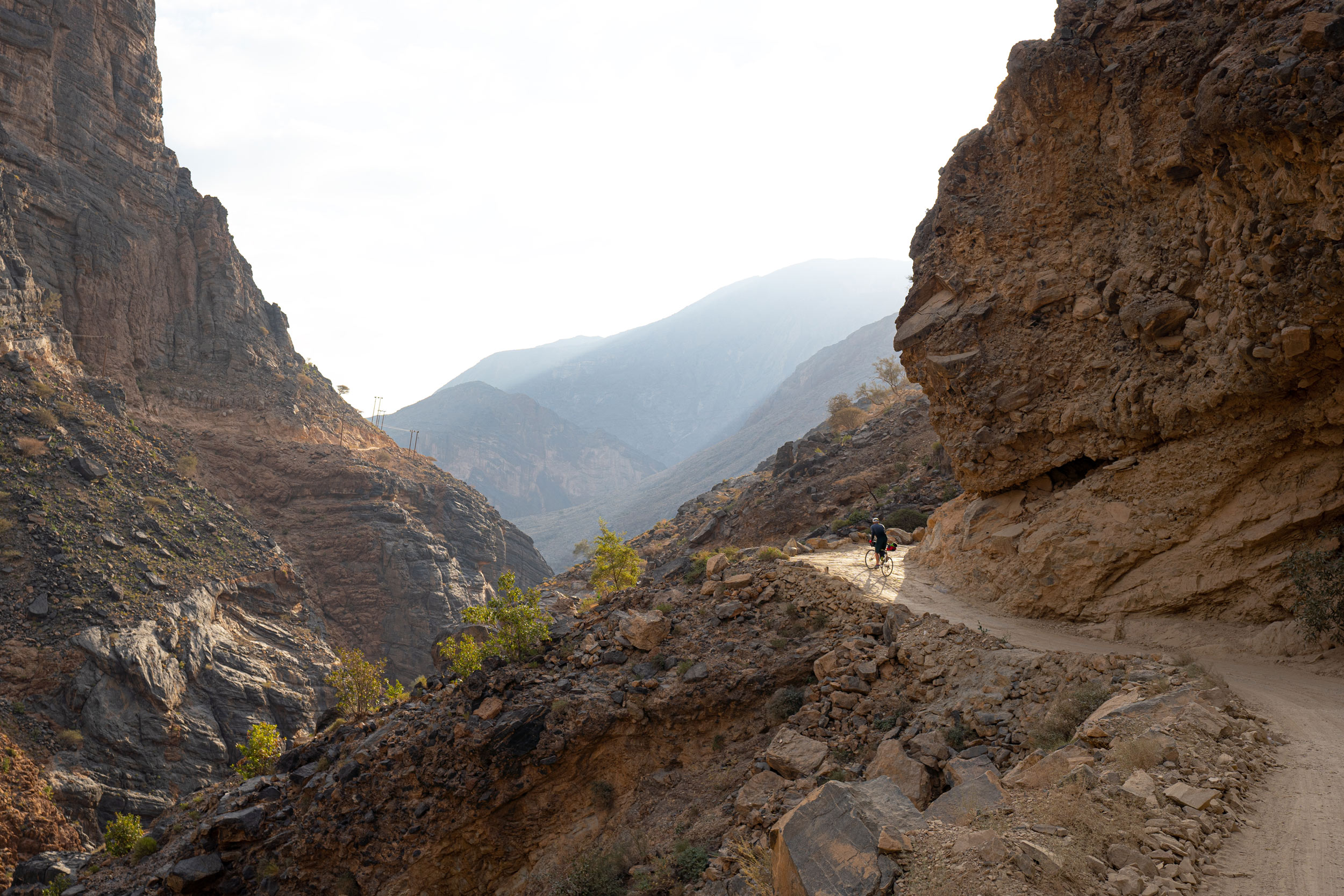
Three years ago, my friend Tim was living and working in Muscat. I was getting ready to head there for a visit and to embark on a solo bikepacking tour of the Western Hajar. This was late February 2020, and as we debated back and forth over email whether this trip was still a good idea, the entire world shut down.
Being an engineer, Tim had created a spreadsheet of all the places in the Western Hajar and beyond that he thought I should see and left it to me to plot the best bikepacking route between them with some suggestions based on his off-roading and hiking experience. After three years of staring at that spreadsheet and endless dreaming of an Oman adventure, I finally made it.
The Route
Starting and ending in Muscat, the 420-mile route takes in the best of the Western Hajar mountain range. Using a mixture of gravel, the occasional dodgy singletrack, and numerous backroads, the big loop starts in the vibrant, sprawling capital city of Muscat and crosses the western portion of the Al Hajar mountain range. Summiting Oman’s highest and second-highest peaks, the route takes in the best sights along the way before looping back to the capital city via the historic Nizwa corridor. For the adventure, I brought along a BMC URS with SRAM Rival eTap/GX Eagle AXS drivetrain, 40mm tires, and integrated suspension stem and stays.
Wadis, Wadis, Everywhere
After spending a couple of days exploring Muscat and enjoying more Indian breakfasts and shawarmas than I care to count, we headed off along the northern flanks of the Western Hajar via the Al Batinah coastal plain. Turning inland from Barka along the so-called Rustaq Loop, which takes in some of Oman’s finest forts, including the picture-perfect Nakhal Fort, the plain is crossed by numerous wadis worth exploring.

While you could spend days riding through every wadi, many of which are interconnected, we headed first up Wadi Mistal to the terraced gardens of Wakan, perched precariously 2,000 meters above sea level. In the spreadsheet mentioned above, my friend had noted a “big dirt road climb at the end” on the way to Wakan, but little did we know that really meant we’d be pushing our bikes up an incredibly steep and dusty track for hours.
But Wakan was worth it. The following day, we hiked up through the climbing network of orchards and farms to see grapes, pomegranates, date palms, and apricots growing, all irrigated by the falaj system. Employed for centuries and still used today, a falaj (plural aflaj) is a narrow, mud-walled water channel used to irrigate fields and date plantations and provide villages and towns with reliable water supplies.
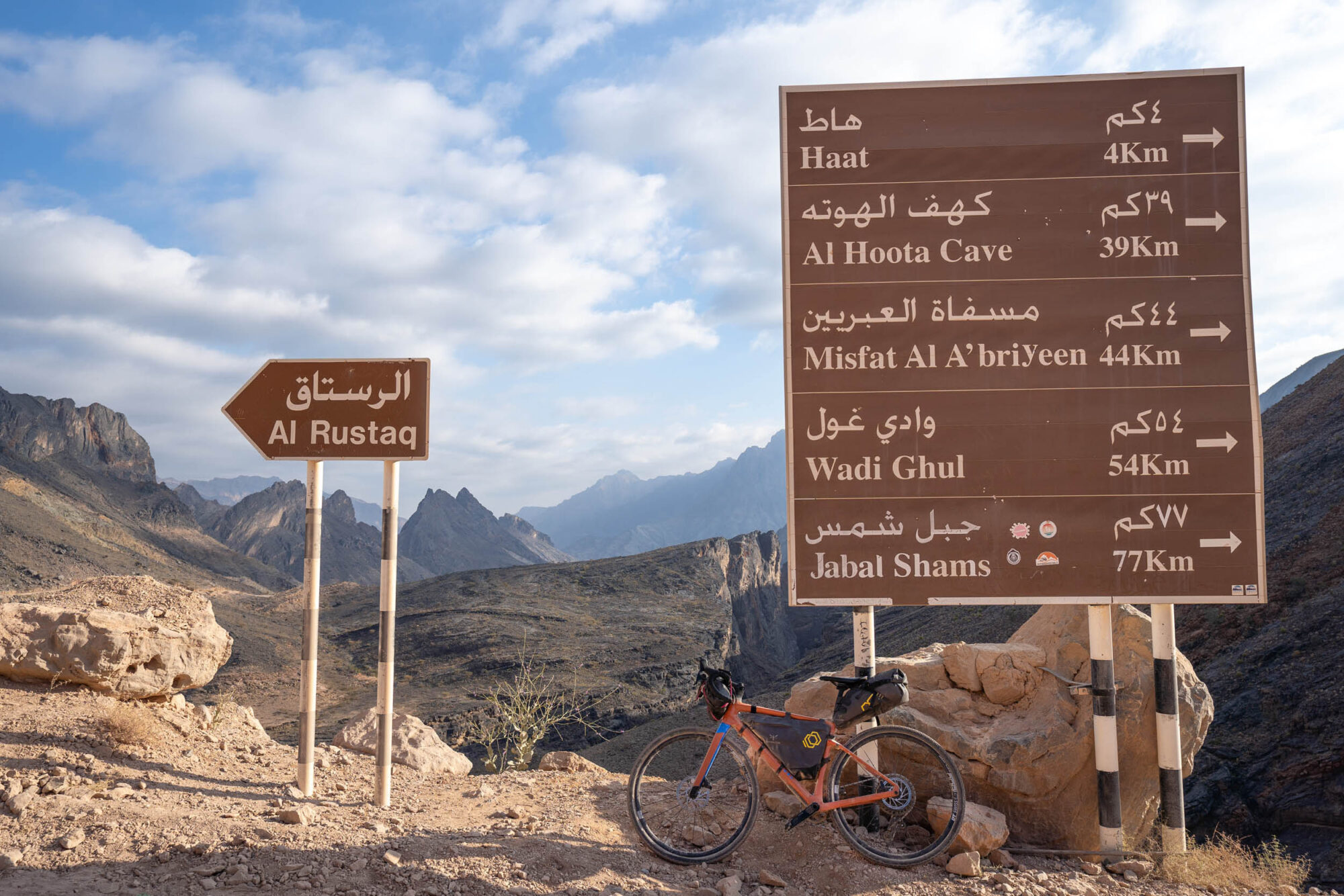
Heading back down to the Rustaq Loop, we rode further along before the turn-off to the incredibly steep and spectacular Wadi Bani Awf, arguably one of the best places to visit in Oman and one of the only ways to cut through the Western Hajar. We continually struggled to keep our eye on the trail as we climbed above the dramatic landscapes of Snake Canyon and Little Snake Canyon and past the mountain oases of Bilad Sayt and Hat. After much effort to reach the windy ridgetop at Sharaf Al Alamayn, better known as the “balcony of two worlds,” we dropped down the other side of the Western Hajar into Al Hamra, with its 400-year-old mudbrick houses and the garden paradise of Misfat al Abriyeen hidden in the mountainside.
To The Top Of Oman
The route to the summit of Jebel Shams heads west from Al Hamra. The tallest peak in Oman at 3,010 meters, here is where you’ll find one of the country’s greatest natural wonders: the Wadi Nakhr Gorge. A freak weather front had us riding in snow, rain, and sleet on the summit plateau, something we didn’t expect when setting out back in Muscat. Luckily, we’d thrown in puffy jackets and waterproofs just in case. The freak snowstorm on the summit of Shams was all over the news for weeks.

We took an extra day on the summit plateau to trek the infamous Balcony Walk. A five-mile out-and-back hike, the trail winds precariously along the rim of Oman’s Grand Canyon, enabling you to peer over the sheer-drop edge straight down to the canyon floor thousands of feet below and watch as the black-tipped feather Egyptian Vultures ride the thermals.
Forts And Souqs
Heading toward Nizwa along the southern flanks of the Western Hajar, rugged networks of wadi channels hide dramatic canyons and caves, including Al Hoota Cave and the ancient petroglyphs at Hasat bin Salt Rock. We took time to explore the ever-flowing springs of Tanuf that feed the fertile lands around the ruins of the old town, which were bombed during the Jebel Akhdar Wars in the 1950s and are the source of much of the country’s bottled drinking water.
We were met with a festive start-of-the-weekend atmosphere upon our Thursday night arrival in Nizwa, the capital of Oman during the 6th and 7th centuries. We joined thousands of locals gorging on mishkak, small cubes of barbecued meat on sticks, from the numerous street stalls set up for the occasion. Everyone was in town for the weekend market, the most famous being the Friday morning goat market, where, starting at dawn, deals were struck between groups of men dressed in dishdasha huddled over goats tied up with string.
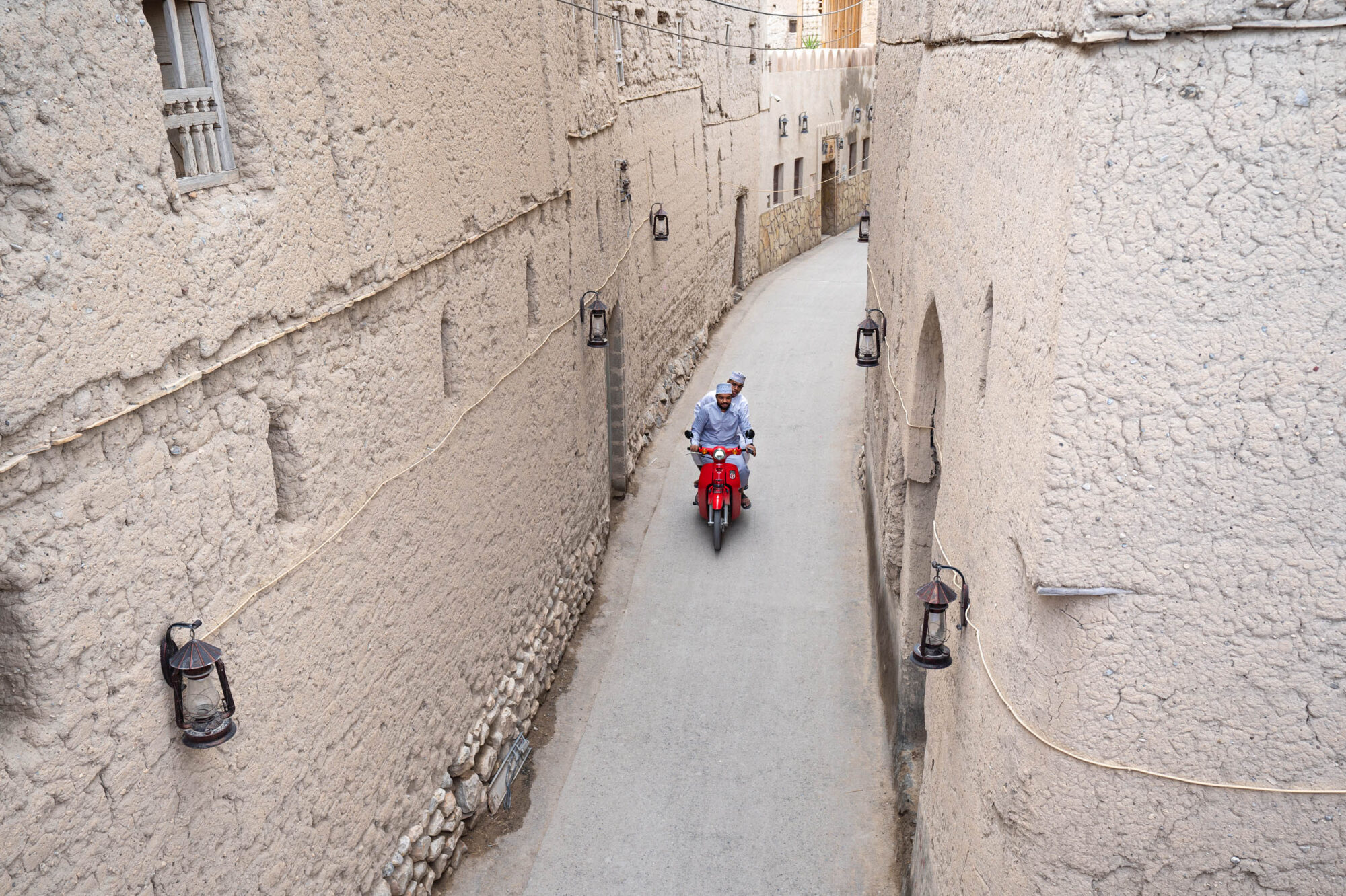
The Green Mountain
After enjoying yet another Indian breakfast of paratha and curry, we headed toward the summit plateau of Jebel Akhdar. The second-highest mountain in the country, frequently visited by Muscat residents wanting to escape the heat of summer, this was the stronghold of the Ibadi imamate until 1959. Part of the Tour of Oman, the climb to the summit plateau is, in no uncertain terms, steep. While not the 40% grades of Wadi Bani Awf, we pushed our loaded bikes uphill for hours yet again.
If we had more time, I would have loved to take a day or two to experience all the mudbrick villages connected by a maze of dirt roads and trails along the vast expanse of the Saiq Plateau before descending back down toward Muscat. The plateau is covered in terraces of blooming rose and fruit trees in March and April—a truly remarkable sight.

The Nizwa-Muscat corridor is one of the most significant in Oman’s history. Flanked by Jebel Akhdar on one side and the more modest Eastern Hajar on the other, this served as the main trade artery between the two major cities. The strategic importance remains evident today in the endless forts, towers, and fortified villages dotting the route, such as those of Fanja, Bidbid, Izki, and Sumail, all worthy diversions off the main road as we made our way back to Muscat.
Back in Muscat, we packed up our bikes for the middle-of-the-night flight back to England before heading to the Crowne Plaza to celebrate an incredible journey with an overpriced beer at Duke’s Bar as we watched the sunset over the Arabian Sea.
I remain captivated by the raw beauty of Oman, with the constant whiffs of frankincense and the muezzin’s call to prayer imprinted on my mind. However, the most lasting impression remains the Omani people’s warmth. Omani hospitality is second to none. You will be stopped multiple times a day by people who are curious to know where you are from, offering you a ride in the back of their Hilux, a drink of water out the window, or even whole bags of food on mountain summits, and wanting you to come to their house to share in cardamom-scented Omani coffee, dates, and fresh fruit.
Route Information
I owe a huge thanks to my friend Tim, who lived and worked in Muscat for years. He created a spreadsheet of all the places in the Western Hajar and beyond that he thought I should see and left it to me to plot the best bikepacking route between them with some suggestions based on his off-roading and hiking experience.
When to Go
It’s worth noting that the mountainous regions of Oman, such as Jebel Akhdar and Jebal Shams, are generally much cooler than the coastal areas. A freak weather front while we were there had us riding in snow, rain, and sleet on many days, something we didn’t quite expect but had luckily thrown in puffy jackets and waterproofs just in case. You might want to do the same.
Direction
Logistics
Transport
Many of the major airlines fly into Muscat International Airport. Taxis are the easiest way to get around the city and are relatively cheap (apart from the official airport taxis). Download the O-Taxi app to make your life easier. It’s Oman’s version of Uber and will save you haggling for prices each time you get into a cab. Just be sure to select the pay with cash option each time as no one wants to pick you up if you pay by card. Note that you might have to wander away from some of the major hotels as they ring fence the perimeter to give business to their own drivers at much higher rates.
We chose to start and end the ride in the city which meant taking some busy roads at the start and finish. Thankfully, most of the major roads have nice wide shoulders so you can ride without a problem.
Safety
Oman is an extremely safe and welcoming country with very little, if any crime. As it’s a predominantly Muslim country (the majority of Omanis are neither Sunni nor Shiite, but Ibadi Muslim where unity and understanding are cornerstones of the faith), you should plan to dress conservatively out of respect, even if they are accepting of other cultures. As a woman, I wore loose long sleeve tops with bike pants that covered my knees. I see absolutely no problem if you identify as female and want to ride solo.
Curiously, there are no dogs to worry about but beware of goats darting out into the road. You will frequently find them snacking on Argan trees and they will be more than happy to chomp on your salty bike gloves as well.
As always, watch out for any canyon when it rains, especially if you choose to hike into places such as Snake Canyon.
And lastly, be forewarned that when you return home, you’ll have a hard time withdrawing from daily Indian breakfast, fresh shawarma, and lemon mint juice…
Visa
A tourist visa is required for most nationalities. You can apply online before you go here.
Language
Thanks to a large expat community, nearly everyone in Oman is trilingual, speaking Arabic and English as well as a language associated with an ethnic background, like Hindi. We found Google Translate extremely helpful in those situations where we encountered someone who spoke little English.
Cash is King
Outside of the major cities, expect to pay cash for everything. You will also need cash for taxis in Muscat.
Camping & Lodging
If you can afford it and want to lighten your load or take a break from camping, there are many “bait” or traditional accommodations scattered along the route. Expect to pay around 25-45 Rial per night with both dinner and breakfast included in the price so it’s a pretty good deal for two people.
Food/H2O
In most towns you can find some sort of market and the service stations are like mini-cities with numerous restaurants and stores. You never need to carry more than a day’s worth of water or food apart from Shams.
Oman is a dry country so you won’t be able to purchase or drink alcohol apart from in the big western hotel chains in Muscat. What you will find instead to refresh yourself is every kind of juice imaginable—pomegranate, mango, and lemon mint being my personal favorites.
Related Content
Make sure to dig into these related articles for more info...
Please keep the conversation civil, constructive, and inclusive, or your comment will be removed.






